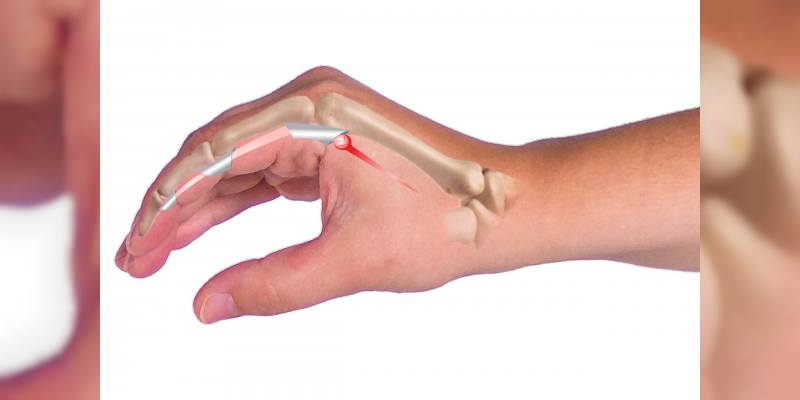Trigger finger is a tendon disease. Tendons are in shape of long threads starting from forearm muscles reaching the fingers and enable the fingers to bend. Swelling in the tendon sheath restricts the movement of the fingers and causes jamming and pain. Sometimes, fingers may jam. When these problems start, if the fingers are continues to be used, it causes more swelling, pain, and jamming.
Trigger finger causes discomfort at the joint of the fingers with the palm. When compression is applied to this area, sensitivity is felt and sometimes swelling may be felt.
In Whom is Trigger Finger seen mostly?
- It is seen above the age of 40.
- It is seen in women more than men.
- It is more likely seen in those using computers intensely.
- It is also likely to been seen in diabetes patients.
- It is seen often in women doing hand and home labor.
While the trigger finger is seen mostly at the age of 40 and above, it can be seen at every age. The disease occurs when finger roots and palm are used and forced often. Inflammatory articular rheumatism damages the joints and causes restriction in movements and pain. When it is advanced, it damages the tissue and causes trigger finger. Those having joint inflammation, farmers, musicians and those using the fingers often are at risk of trigger finger.
What are the symptoms of Trigger Finger?
In the affected finger, sensitivity and node are felt in the palm.
The finger is jammed flat or bent.
With trigger finger, when the finger moves, it is felt as if the finger at the space and a clicking voice is heard.
Stiffing occurs in the affected finger.
In the diagnosis of trigger finger, swelling of the painful area, mass and nodule formation are examined. The treatment method is determined bu evaluating jamming frequency and severity.
Treatment of Trigger Finger
Treatment of trigger finger is determined according to the condition of the disease.
Medication, injection, and surgical methods are used for treatment. At the beginning of the disease, anti-inflammatory and pain killer medication treatment is applied. In the event that this treatment method does not affect, cortisone is injected into the area where the tendon is compressed. So that, painful area is relaxed. As steroid needle may damage the tendon, this method is not preferred often.
If those methods do not benefit in trigger finger treatment and if the problem persists more than 3 months, the trigger finger is carried out. The operation is performed as closed and open surgery. Procedures are carried out in the palm. Under anesthesia, the area where the tendon is compressed is relaxed, so that finger movements are enabled without any pain or disturbance. The patient is discharged on the same day as the operation.
What to Pay Attention after Trigger Finger Surgery
- You should have regular dressing until the sutures are removed. It is essential to protect the dressed area against wetness to prevent infection. You should have your sutures removed on the date determined by your physician.
- You should move your fingers to prevent adhesion as soon as possible after the surgery.
- After the operation, some patients may have stiffness in finger movements. In this case, you can prevent stiffing by doing finger exercises.
- It is essential to use the medication prescribed by your physician for the recovery period.
Trigger Finger in Housewives
Trigger finger is seen in housewives often due to cleaning works. Squeezing clothes, wiping carpet, cleaning floor, gripping saucepan, teapot may cause trigger finger. The risk increases in women doing handiwork. The best way to prevent the trigger finger and to stop the advancement of the disease in early stages is resting the fingers. Also, it is beneficial to consult an orthopedic physician to get information about finger exercises and apply them.








